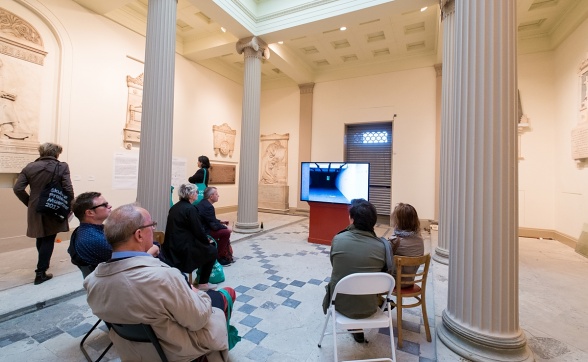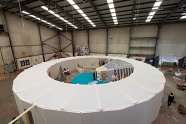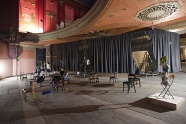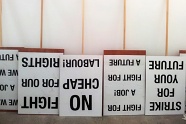
Lawrence Abu Hamdan, Rubber Coated Steel, 2016. Installation view at The Oratory. Photo: Mark McNulty
Lawrence Abu Hamdan, Rubber Coated Steel, 2016. Installation view at The Oratory. Photo: Mark McNulty
Housed within the neo-classical architecture of The Oratory in the grounds of Liverpool’s Anglican Cathedral, Lawrence Abu Hamdan’s Rubber Coated Steel testifies to the relationship between technology and power, as part of the Ancient Greece episode. Abu Hamdan is a forensic audio analyst as well as an artist, and in 2014 he was asked to work on audio files that recorded the shootings of Nadeem Nawara and Mohamed Abu Daher on the West Bank of Palestine. These files, which proved that the boys were shot by real bullets and not rubber ones, are the starting point for a work about aesthetics, politics and the violence of sound and silence.
The Oratory includes one of Rita McBride’s Perfile series, Lara Favaretto’s Lost and Found, and Jason Dodge’s What the Living Do. It is also the place where visitors are invited to participate in a secret project, by saying the words "I like my friends" at the desk.The Oratory was built in 1829, and its architect was John Foster, one of the Greek Revivalists who shaped Liverpool’s neoclassical cityscape. It contains a number of neoclassical sculptures, three of which are by John Gibson (1790–1866). Brought up in Liverpool, Gibson sought to emulate the style of the classical world in his own work.
The Oratory is part of National Museums Liverpool.
The Oratory
Cathedral Gate
St James Mount
Liverpool
L1 9DY
Open daily 10am – 6pm
Liverpool Biennial
55 New Bird Street
Liverpool L1 0BW
- T +44 (0)151 709 7444
- info@biennial.com
Liverpool Biennial is funded by
Founding Supporter
James Moores








